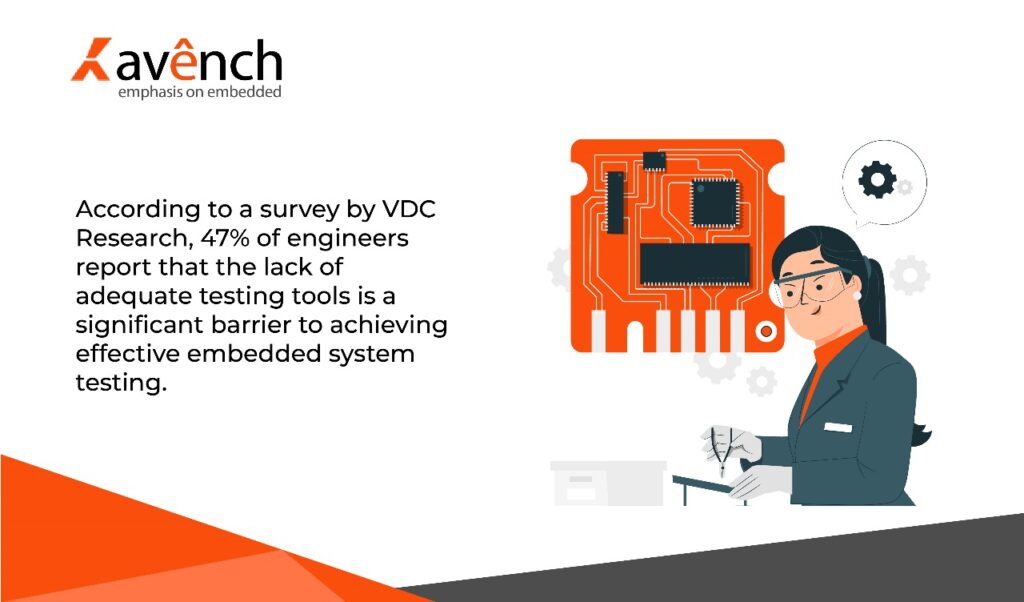Embedded system testing is crucial for ensuring that devices perform as intended, especially in critical industries such as automotive, medical devices, and aerospace. However, errors in the testing process can lead to costly failures, defects, or malfunctions. To mitigate risks, it’s essential to understand common mistakes and avoid them early on. This article will cover the critical missteps often encountered during embedded system testing and guide how to prevent them, ensuring robust and reliable systems.
1. Inadequate Test Planning
One of the most common mistakes in embedded system testing is a lack of proper planning. Testing without a structured plan leads to gaps, overlooked features, and delays in catching defects. It’s crucial to define the scope of testing right from the start. This involves identifying key functionalities that need to be tested, specifying the performance benchmarks, and establishing timelines for different phases.
A well-structured test plan outlines which embedded system testing tools to use and what objectives each testing phase should accomplish. It also considers hardware-software integration points, the range of operating conditions the system will be subjected to, and the available resources for testing.
2. Neglecting Hardware-Software Integration
Embedded systems are a unique blend of hardware and software. Focusing only on one aspect during testing is a common oversight. Embedded system testing should thoroughly address the interaction between hardware and software to detect any integration issues that may arise.
For instance, real-time operating systems (RTOS) and hardware controllers often introduce timing-related issues. Ignoring how software will behave under specific hardware constraints can lead to undetected bugs. Comprehensive testing should simulate real-world conditions where the system will operate, ensuring that both components work in harmony.
3. Skipping Boundary in Embedded systemTesting
Boundary testing is essential in embedded systems, which frequently involve sensors and controllers dealing with real-time data inputs. It’s common for testers to overlook boundary testing or handle it superficially. However, the failure to test limits—whether it’s for memory, sensor inputs, or operating conditions—can be disastrous.
Testing should push the embedded system to its operational boundaries, examining how it reacts to extreme inputs and conditions. For instance, in temperature-sensitive devices, subjecting the system to both extreme heat and cold ensures that the embedded system performs within the specified temperature range.
4. Inadequate Use of Embedded System Testing Tools
Choosing the right testing tools plays a pivotal role in the success of embedded system testing. However, many teams either fail to leverage specialized embedded system testing tools or rely on generic ones that don’t cater to the specific needs of the system.
There are tools designed for monitoring system behaviours, debugging, and simulating operational conditions. Failure to use these tools or using them incorrectly can result in missed bugs and increased time-to-market. Whether it’s testing the system’s real-time performance or debugging hardware-software interactions, adopting the right embedded system testing tools ensures more thorough and efficient testing processes.

5. Not Testing Under Realistic Conditions
Embedded systems are often used in specific and sometimes extreme environments. Testing them in controlled lab conditions without simulating the real-world environment they will function can be a costly mistake. Many failures arise because the system wasn’t subjected to realistic operating conditions during testing.
For example, if an embedded system is intended for use in a vehicle, it should be tested for vibrations, temperature fluctuations, and power disruptions. Skipping these steps can result in the system behaving correctly in lab conditions but failing when deployed in its actual environment.
6. Overlooking Regression Embedded System Testing
In any system development process, changes are inevitable. However, changes made to embedded systems—whether in hardware or software—can affect previously stable functionality. A common mistake is to skip regression testing, assuming that once a feature works, it will continue working as more updates are applied.
Regression testing ensures that any changes don’t negatively affect existing functionality. Automating this process using embedded system testing methods can significantly reduce the chances of introducing new bugs while maintaining older features intact.
7. Improper Use of Unit Testing
Unit testing verifies individual components of the system before integrating them into the full system. Many developers neglect this step, assuming that system-level testing will catch all issues. However, unit testing is essential in embedded system testing, as it allows for the detection of faults at the earliest stage.
By testing each module individually, bugs can be caught and resolved early, preventing them from becoming more complex problems later on when modules are integrated. This reduces debugging time and improves system reliability.
8. Ignoring Power Consumption Testing
Embedded systems often operate in environments where power efficiency is critical, such as battery-powered devices. However, power consumption testing is frequently overlooked or only given cursory attention. An embedded system may work well in other aspects, but if it drains the battery too quickly, it won’t meet user expectations or industry requirements.
Testing the power consumption of different components—under varying loads and usage conditions—ensures that the system meets energy efficiency standards. This is especially important for IoT devices, medical implants, or remote sensors where energy conservation is a priority.

9. Failure to Update Testing Methods
The field of embedded systems is continuously evolving, with new processors, protocols, and sensors emerging regularly. Sticking to outdated embedded system testing methods can prevent a team from identifying modern issues in newer systems. It’s critical to keep testing techniques updated to reflect the advancements in both hardware and software.Newer methods like hardware-in-the-loop (HIL) simulation or using virtual environments for early-stage testing allow engineers to catch problems sooner in the development cycle. Failing to update embedded system testing methods can result in inadequate coverage and overlooked bugs.
10. Not Prioritizing Security Testing
As embedded systems become more integrated into networks and IoT ecosystems, security risks grow. Many embedded systems are designed without robust security measures, which poses significant risks, especially in medical, industrial, or automotive applications.
Security testing needs to be incorporated early in the embedded system testing process. This includes penetration testing, vulnerability scans, and ensuring that encryption and authentication mechanisms are functioning as intended. Failing to address security can lead to breaches, unauthorized access, and system exploitation.
Conclusion
To wrap up, embedded system testing is a multifaceted process that requires attention to various technical aspects, from hardware-software integration to power consumption. Understanding what is embedded system testing and using appropriate embedded system testing tools and methods can greatly enhance the testing process. By avoiding the common mistakes outlined above, testing teams can ensure that their systems are reliable, efficient, and secure, minimizing costly failures in the field.
For more information on embedded product design companies in usa subscribe to our blog. For sales queries, contact us at +1 (775) 404-5757 or email sales@avench.com. We are here to assist you.

